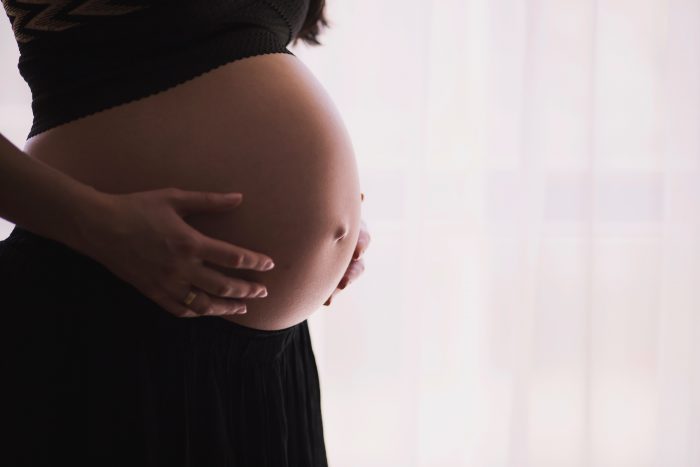
The Supreme Court supports the position of the Superior Court of Justice of Madrid and recognizes that maternity benefits of the Social Security, are exempt in the Personal Income Tax.
Exemption from maternity benefit: legal doctrine of the Supreme Court
With regard to public family benefits, the regulations regulate four types of income exempt from personal income tax depending on the type of benefit,distinguishing between:
- family benefits (LGSS art.188 s.);
- benefits granted to professionals by social security mutual societies;
- public benefits for birth, childbirth, adoption, dependent children and orphanhood;
- public maternity benefits received from the Autonomous Communities or Local Entities.
With regard to the scope of the exemption from public benefits for maternity,the Superior Court of Justice of Madrid 29-6-17 interpreted that the rule contemplates the exemption from public benefits for birth, childbirth or multiple adoption, dependent children and orphanhood; without distinguishing the origin of the benefits, and that its claim, referring below to the public maternity benefits received from the Autonomous Communities or local entities, is extend the tax benefit to benefits that come from other public entities, whether local or regional.
That is why in its judgment, the High Court of Justice of Madrid admits the exemption from the maternity benefit (which it understands included within the public benefits for birth, childbirth, adoption, dependent children and orphanhood) received by a taxpayer of the INSS.
Dissatisfied, the State’s Attorney interposes a appeal,which is admitted by the Supreme Court, which identifies as rule object of interpretation the LIRPF art.7h) and that indicates as a matter that presents objective cassational interest for the formation of the jurisprudence, to determine whether or not the public maternity benefits received from the INSS are exempt from personal income tax.
Having analysed each of the allegations put forward by the Administration, the Supreme Supreme Justice Establishes that:
(a) With respect to the location of the maternity benefit, the judgment under appeal does not include the benefit within the family benefits as alleged by the Administration but within the public benefits for birth, childbirth, adoption, dependent children and orphanhood, so that argument is inoperative for the purposes of the present action.
(b) As regards the undue extension of the exemption relating to public maternity benefits of regional or local origin to the State level, this equality is not possible in the case of benefits of a different nature.
(c) In relation to the nature of the benefit, it is recognized the compatibility of the remuneration character of the maternity benefit, replacing the salary received by employees, with the adoption of measures to promote work-family reconciliation and support for the birth rate and working women.
Having refuted the arguments put forward by the State’s Counsel, the Supreme Court concludes that maternity benefit may be included in the Federal Income Tax Act art.7h) when it provides that “Other benefits for birth, childbirth or multiple adoption, adoption, dependent children and orphanhood shall also be exempt” on the basis of the following reasons:
- because this is clear from the Explanatory Memorandum of Law 62/2003 that introduced the exemption in the Personal Income Tax Act, by making express reference to maternity benefit;
- because this is clear from the grammatical interpretation of the Lirpf7h), which by indicating that public maternity benefits received by the Autonomous Communities and Local Authorities are also exempt, implicitly recognizes the state maternity benefit;
- because this is how it is inferred from the systematic interpretation of the LGSS (General Social Security Law), which on the one hand defines maternity benefit as a subsidy managed by the INSS to compensate for the loss of income of the worker and, on the other, conceives maternity as a protected situation.
In the case of the foregoing, there is no right to appeal.
Taxpayers benefiting from the maternity benefit with payment made within the last four years (limitation period), can request the refund of personal income tax by urging the procedure of refund of undue income.
General procedure for the refund of undue income
The general procedure for the refund of undue income consists of two phases: one aimed at declaring the right to obtain the refund, and the other for the execution of that declaration.
(1) With regard to the procedure for the recognition of the right to repayment,it should be noted that:
The initiation of the procedure may be carried out at the request of the interested party or ex officio:
(a) Initiation at the request of the person concerned. It must be carried out by means of a request addressed to the body competent to decide. The application must contain, in addition to the particulars which, in general, must be included in the application or letter for the initiation at the request of the person concerned of a review procedure through administrative channels:
- The justification for the undue income. The documents proving the right to the refund and all the appropriate evidence or at least the exact mention of the identification data of the income made (including the date, the place of the deposit and the amount of the same) must be attached.
- The express declaration of the means chosen for the return (transfer or check if the Administration had not indicated others).
- If applicable, a request for compensation.
(b) Ex officio initiation. It must be effected by notifying the person concerned of the initiation agreement or, where the information held by the administration is sufficient to formulate the motion for a resolution, by notifying the proposal for a resolution. The competent body for the processingof the procedure must verify the circumstances that, where appropriate, determine the right to the refund, the reality of the income and its subsequent non-refund, as well as the ownership of the right and the amount of the refund. Prior to the resolution, it must notify the motion for a resolution to the obligor so that he can present the allegations and the documents and supporting documents that he deems appropriate. This procedure can be dispensed with when other facts or allegations than those made by the taxpayer are not taken into account or when the amount proposed to be returned is equal to that requested, excluding interest for late payment.
Once the proceedings have been completed, it must submit it to the body responsible for resolving the motion for a resolution. In the area of state competence, the competence to resolve corresponds to the collection body that is determined in the specific organization rule, who must issue a reasoned resolution in which, if appropriate, the right to the refund is agreed, the holder of the right and the amount of the refund are determined.
The LGT expressly establishes that the maximum period for notifying the resolution is six months from the request of the interested party or from the notification of the agreement to initiate the procedure ex officio. Failure to notify the decision within that period results in the presumed revocation or rejection, depending on whether the proceedings have been initiated ex officio or at the request of the person concerned.
The resolution can be claimed in economic-administrative means, after an appeal for reinstatement, if the interested party decides to file it.
2. Where the right to repayment has been recognised by the procedure referred to in paragraph (1) or by an administrative act or an administrative or judicial decision, the repayment shall be immediately encurred.
Orphan’s benefits, for dependent children and/or births
The:
- All family benefits regulated in RDLeg 1/1994 art.180 to 189 (since 2-1-2016, the reference should be understood to RDLeg 8/2015 art.237 -redacc L 3/2017- and 351 to 362): benefits for dependent children or minors, for birth or adoption of children in large families, single parents and in the cases of disabled mothers and for multiple childbirth or adoption.
- Pensions and passive assets of orphanhood and in favor of grandchildren and siblings, under 22 years of age or incapacitated for all work, received from the public social security schemes and passive classes.
- Other public benefits for birth, childbirth or multiple adoption, adoption, dependent children and orphanhood, as well as public maternity benefits received from the autonomous communities or local authorities.
- The benefits and family allowances received from any of the Public Administrations,whether linked to birth, adoption, foster care or care of minor children.
- The benefits received by professionals not included in the special social security scheme for self-employed or self-employed workers paid by social security mutual societies that act as alternatives to this special scheme, provided that they are benefits identical to those of the Social Security.
Concept of exemption
The taxable event is the budget, the realization of which gives rise to the birth of the tax obligation. The law may:
- exclude from the taxable event certain cases, so that this, by legal will, does not occur: non-subjection; or
- prevent the tax liability from arising, even if the taxable event has occurred: exemption.
In any case, you should know that the Treasury is already preparing an official claim model (which is not yet available). If you have any questions about it, you can contact our AYCE Laborytax advisors to help you resolve them.











